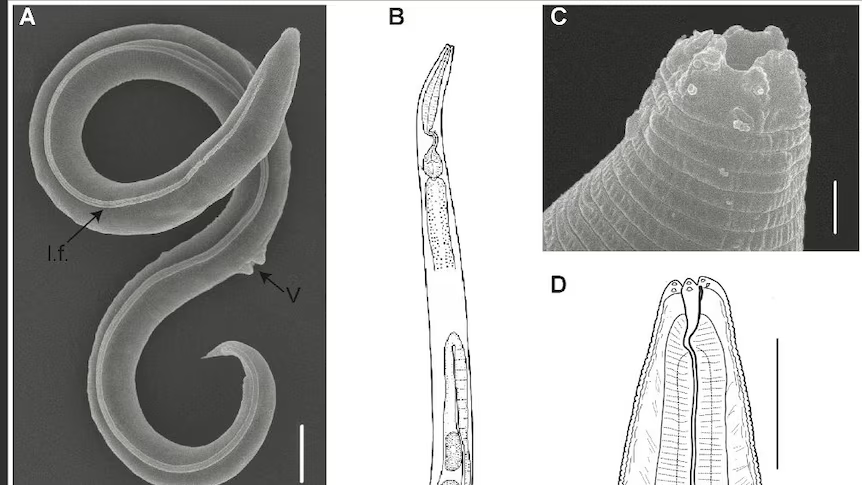Home / covid / Chinese Scientists Discover New Bat Virus with Potential Human Transmission
Chinese Scientists Discover New Bat Virus with Potential Human Transmission
By: My India Times
2 minutes read 46Updated At: 2025-02-24

New Bat Coronavirus Identified: Could It Pose a Future Threat?
Chinese researchers have identified a new bat coronavirus that utilizes the same cell-entry mechanism as SARS-CoV-2, the virus responsible for COVID-19. According to their findings, published in the journal Cell, the virus—named HKU5-CoV-2—enters human cells through the ACE2 receptor protein, a critical gateway exploited by COVID-19.
Although this virus does not enter human cells as efficiently as SARS-CoV-2, its presence raises concerns about potential future spillover events. Scientists emphasize the importance of monitoring such emerging viruses, as they could evolve into more transmissible or dangerous variants over time.
Understanding the Mechanism: How Does HKU5-CoV-2 Infect Human Cells?
Similar to SARS-CoV-2, HKU5-CoV-2 contains a structural feature called the furin cleavage site. This feature plays a crucial role in helping the virus bind to and penetrate human cells via the ACE2 receptor.
In laboratory experiments, the virus successfully infected human cells with high ACE2 expression, as well as models of human airways and intestines. However, researchers noted that its binding affinity to human ACE2 is significantly lower than that of SARS-CoV-2, suggesting a reduced capability for human adaptation.
Potential Treatments: Antibodies and Antiviral Drugs Show Promise
Despite concerns surrounding the discovery, researchers have identified existing monoclonal antibodies and antiviral drugs capable of neutralizing HKU5-CoV-2. These treatments could potentially serve as a first line of defense should the virus evolve into a more transmissible form.
The pharmaceutical market responded swiftly to the study’s release. Bloomberg reported that the discovery caused a surge in shares of vaccine manufacturers. Pfizer's (PFE.N) stock rose by 1.5%, Moderna (MRNA.O) saw a 5.3% increase, and Novavax (NVAX.O) experienced a 1% gain despite a declining broader market.
Expert Opinions: Should We Be Worried About Another Pandemic?
While the findings highlight the potential for another coronavirus spillover, some experts believe the public reaction has been exaggerated. Dr. Michael Osterholm, an infectious disease specialist at the University of Minnesota, downplayed the immediate threat, pointing out that the global population now has greater immunity to SARS-like viruses compared to 2019.
The study itself concludes that HKU5-CoV-2 has several biological limitations that make human adaptation unlikely in its current form. The researchers emphasize that, while vigilance is necessary, the risk of this virus triggering a new pandemic remains low.
The Importance of Continuous Monitoring
The discovery of HKU5-CoV-2 underscores the ongoing risks posed by emerging infectious diseases. While current data suggests it is not a major threat to humans at this time, scientific monitoring and research remain essential.
By staying ahead of potential zoonotic threats, global health authorities can better prepare for future outbreaks, ensuring early intervention and minimizing risks. The continued study of bat coronaviruses will be crucial in shaping pandemic preparedness strategies moving forward.
....New Bat Coronavirus Identified: Could It Pose a Future Threat?
Chinese researchers have identified a new bat coronavirus that utilizes the same cell-entry mechanism as SARS-CoV-2, the virus responsible for COVID-19. According to their findings, published in the journal Cell, the virus—named HKU5-CoV-2—enters human cells through the ACE2 receptor protein, a critical gateway exploited by COVID-19.
Although this virus does not enter human cells as efficiently as SARS-CoV-2, its presence raises concerns about potential future spillover events. Scientists emphasize the importance of monitoring such emerging viruses, as they could evolve into more transmissible or dangerous variants over time.
Understanding the Mechanism: How Does HKU5-CoV-2 Infect Human Cells?
Similar to SARS-CoV-2, HKU5-CoV-2 contains a structural feature called the furin cleavage site. This feature plays a crucial role in helping the virus bind to and penetrate human cells via the ACE2 receptor.
In laboratory experiments, the virus successfully infected human cells with high ACE2 expression, as well as models of human airways and intestines. However, researchers noted that its binding affinity to human ACE2 is significantly lower than that of SARS-CoV-2, suggesting a reduced capability for human adaptation.
Potential Treatments: Antibodies and Antiviral Drugs Show Promise
Despite concerns surrounding the discovery, researchers have identified existing monoclonal antibodies and antiviral drugs capable of neutralizing HKU5-CoV-2. These treatments could potentially serve as a first line of defense should the virus evolve into a more transmissible form.
The pharmaceutical market responded swiftly to the study’s release. Bloomberg reported that the discovery caused a surge in shares of vaccine manufacturers. Pfizer's (PFE.N) stock rose by 1.5%, Moderna (MRNA.O) saw a 5.3% increase, and Novavax (NVAX.O) experienced a 1% gain despite a declining broader market.
Expert Opinions: Should We Be Worried About Another Pandemic?
While the findings highlight the potential for another coronavirus spillover, some experts believe the public reaction has been exaggerated. Dr. Michael Osterholm, an infectious disease specialist at the University of Minnesota, downplayed the immediate threat, pointing out that the global population now has greater immunity to SARS-like viruses compared to 2019.
The study itself concludes that HKU5-CoV-2 has several biological limitations that make human adaptation unlikely in its current form. The researchers emphasize that, while vigilance is necessary, the risk of this virus triggering a new pandemic remains low.
The Importance of Continuous Monitoring
The discovery of HKU5-CoV-2 underscores the ongoing risks posed by emerging infectious diseases. While current data suggests it is not a major threat to humans at this time, scientific monitoring and research remain essential.
By staying ahead of potential zoonotic threats, global health authorities can better prepare for future outbreaks, ensuring early intervention and minimizing risks. The continued study of bat coronaviruses will be crucial in shaping pandemic preparedness strategies moving forward.
By: My India Times
Updated At: 2025-02-24
Tags: covid News | My India Times News | Trending News | Travel News
Join our WhatsApp Channel
















-outbreak in-china.jpg)



























































































.png)
 (1).png)























